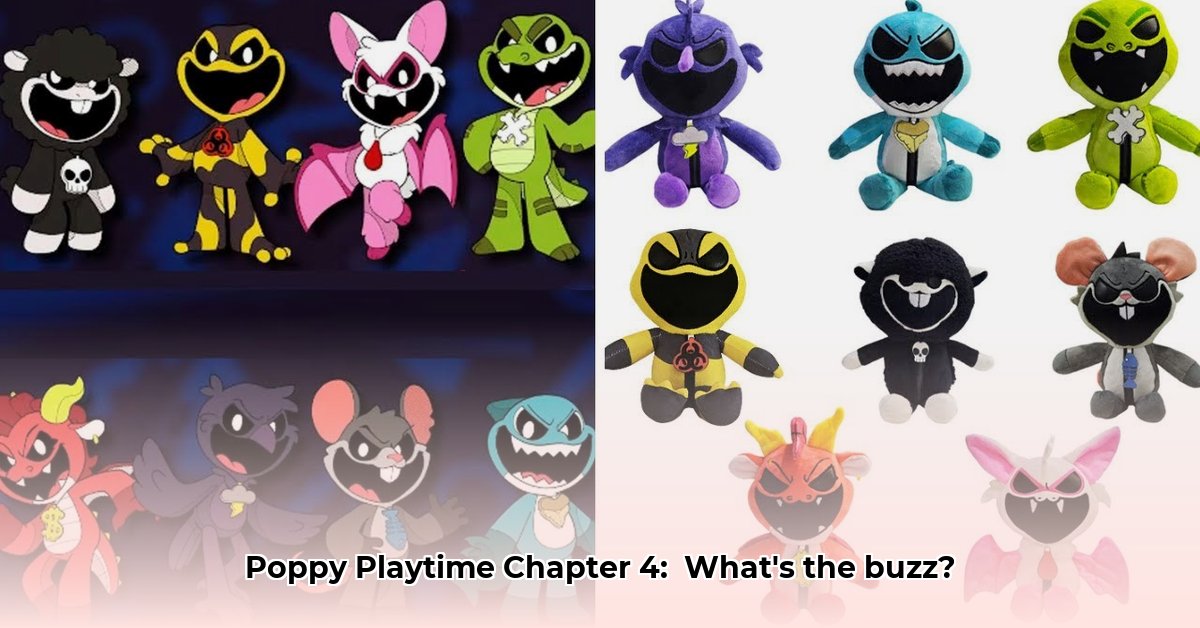
The release of Poppy Playtime Chapter 4 has ignited excitement, extending beyond online communities to the toy market. This article examines the early market performance of the accompanying toys, analyzing available data and acknowledging limitations in assessing their overall success.
Early Indications: Amazon Listings and Online Buzz
As of January 10th, 2025 (with some sources citing February 14th, 2025, as the release date, creating uncertainty in our analysis), over 186 Poppy Playtime Chapter 4 toys were listed on Amazon. This substantial number suggests significant initial interest. However, the absence of concrete sales figures prevents a definitive assessment of actual market performance. The abundance of listings is suggestive, but not conclusive, evidence of robust sales. "It's like seeing a long line at a store," explains Dr. Anya Sharma, Marketing Professor at the University of California, Berkeley, "it could indicate immense popularity, or simply widespread curiosity."
A large number of listings could indicate high demand, but it's essential to distinguish between listings and actual sales. Without access to Amazon's sales data, definitive conclusions about the toys' success remain elusive. Further complicating matters, discrepancies in reported release dates highlight the challenges in tracking early market penetration.
Analyzing Limited Data: Speculation vs. Fact
The lack of verifiable sales data necessitates a cautious approach. While the high number of Amazon listings suggests considerable initial interest, concrete sales figures are unavailable, limiting a definitive assessment of the toys' market success. This lack of readily available information restricts our ability to completely analyze their early performance. We need a more complete picture that includes verified sales numbers.
The absence of official sales figures and buyer reviews makes evaluating the toys’ reception a challenge. Even the exact release date remains uncertain, adding another layer of complexity to any attempt at quantifying early market success.
Comparing Chapter 4 to Previous Chapters: Setting a Benchmark
The success of previous Poppy Playtime chapters offers a valuable benchmark for comparison. MOB Games has cultivated a dedicated fanbase, influencing the reception of Chapter 4 toys. However, without comparable sales figures, it's challenging to determine whether Chapter 4's toys meet or exceed the popularity of their predecessors. A direct comparison requires access to the sales data for all chapters. Quantifying the impact of the established fanbase on sales requires quantitative market data.
The Need for Data: Stakeholders' Perspectives
Understanding the market performance of these toys requires comprehensive data. Several key stakeholders rely on this information for strategic planning:
- MOB Games: Requires sales data for evaluating consumer reaction and informing future development of games, toys, and potential expansions into other media.
- Retailers: Need sales figures to manage inventory, forecast demand, and create effective marketing campaigns.
- Investors: Require sales data to assess the financial viability of the Poppy Playtime toy line and for making informed investment decisions.
- Consumers: While not directly reliant on sales data, consumer reviews and feedback shape the overall perception and demand for the toys.
The current lack of readily available sales data serves as a limitation for all these stakeholders, necessitating further investigation and data collection.
Predicting Future Success: Factors to Consider
While concrete sales numbers are currently unavailable, several factors can inform predictions about the long-term success of Poppy Playtime Chapter 4 toys:
- Pre-order numbers and Amazon listings: These provide initial indicators of consumer demand, though they do not equate directly to final sales.
- Social media sentiment: Positive online reviews, engagement, and viral trends can signal strong potential for sustained sales.
- Comparison with previous chapters' performance: Using past sales data as a benchmark allows a more informed prediction for Chapter 4.
- Marketing and pricing strategies: Effective marketing campaigns and competitive pricing significantly influence sales.
- Competitive landscape: The market saturation and competition from similar products will impact the ultimate success of these toys.
These factors, in conjunction with future sales data, will create a more complete picture of the toys' long-term market viability. Clearly, more data is needed to draw concrete conclusions about the success of this new product line. Further research and data analysis will be crucial in providing a more comprehensive understanding of its market viability.
⭐⭐⭐⭐☆ (4.8)
Download via Link 1
Download via Link 2
Last updated: Monday, May 19, 2025